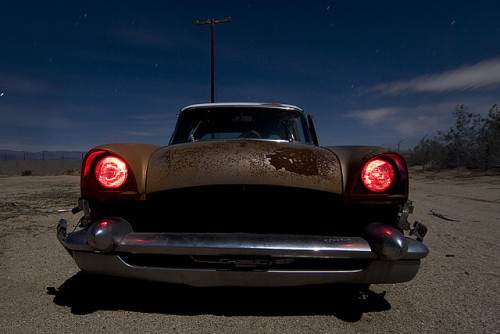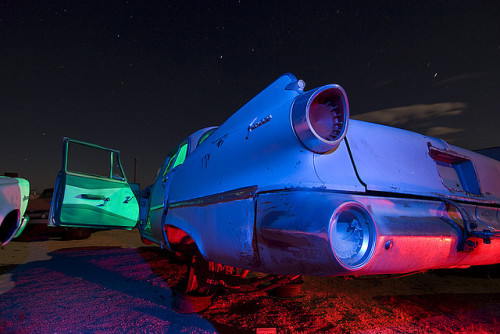
Pontiambulance, via Lost America Flickr.
Light painting is, in essence, shooting a long exposure photo (camera on a tripod), typically at night or in a low light setting, with a light source being the only thing that moves, allowing you the ability to, in Paiva's case, highlight different areas of the scene with different colored light sources. (He uses flashlights or strobes covered with theatrical colored gel filters.)

Rasta-ribbean, via Lost America Flickr.
He truly has a massive portfolio of work done this way, and most importantly to me, a slew of photos from old junkyards, collector car scrap yards, and various other galleries of automobile related polychromatic magic. Most of the the locations that Paiva shoots in are either in such disrepair he is putting himself in harm's way for the love of his work or he is forced to trespass on the property to get the shots he wants, giving him serious badass bonus points. But he does what he does for the benefit of people like you and me: preserving the last remaining remnants of an era long gone, of a time when our country felt new and full of hope and (outlandish?) dreams.

Dart Seneca, via Lost America Flickr.
Unsurprisingly, many of the places featured in Lost America have completely disappeared, either and the hand of man or by the ever erasing scheme of nature, so it is a blessing to have this work to look back on. For more, check out the Lost America Flickr page and hear Troy Paiva give an interview on the technique involved in capturing these images.
No comments:
Post a Comment